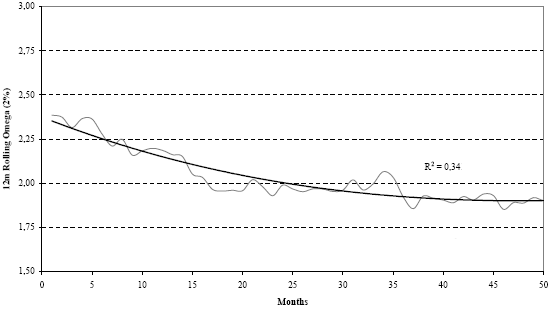Do hedge funds have a predictable life cycle? If so, can investors exploit it? In his January 2008 draft paper entitled “The Life Cycle of Hedge Funds”, Dieter Kaiser investigates whether excess returns diminish as a hedge fund ages perhaps because: (1) successful hedge funds outgrow their target markets; (2) good returns attract other investment managers who compete for similar inefficiencies; and/or (3) successful hedge funds outgrow their founding entrepreneurial spirits. Using return data for an initial sample of 1,433 hedge funds over the period January 1996 through May 2006, he finds that:
- After four years, return data for more than half of the initial sample of 1,433 funds is unavailable. Fewer than 4% of the initial sample have return data for the entire sample period.
- Risk-adjusted returns of individual hedge funds decrease as the funds age. The life cycle of the typical hedge fund is: (1) initial outperformance; (2) a gradual erosion of performance over the first two to three years; and, (3) flattening of performance at the resulting level. Many funds cease operation, while a minority revitalize performance.
- The life cycle is especially evident for non-directional (market neutral) strategies, which tend to outperform directional (long or short) strategies early in life but then degrade more quickly.
- About half of all funds have three growth-contraction phases. Directional strategies tend to exhibit more phases than do non-directional strategies.
The following figure, adapted from the paper, depicts the performance erosion of the typical hedge fund over the first four years of its life (while at least half the original sample of funds are still reporting returns). The return measurement on the vertical axis is “omega,” developed specifically for the hedge fund industry. Omega represents the ratio of probability-weighted profits and losses with respect to some minimum acceptable profitability (here 2%). In other words, it is the probability of excess return per unit of shortfall risk. The figure shows that the typical fund tends to outperform the threshold initially, but performance erodes over two to three years. The best-fit line shown is a third-order polynomial.

In summary, investors may want to get a fresh hedge fund horse every two or three years.
Similar logic may apply to actively managed mutual funds and investment newsletters.